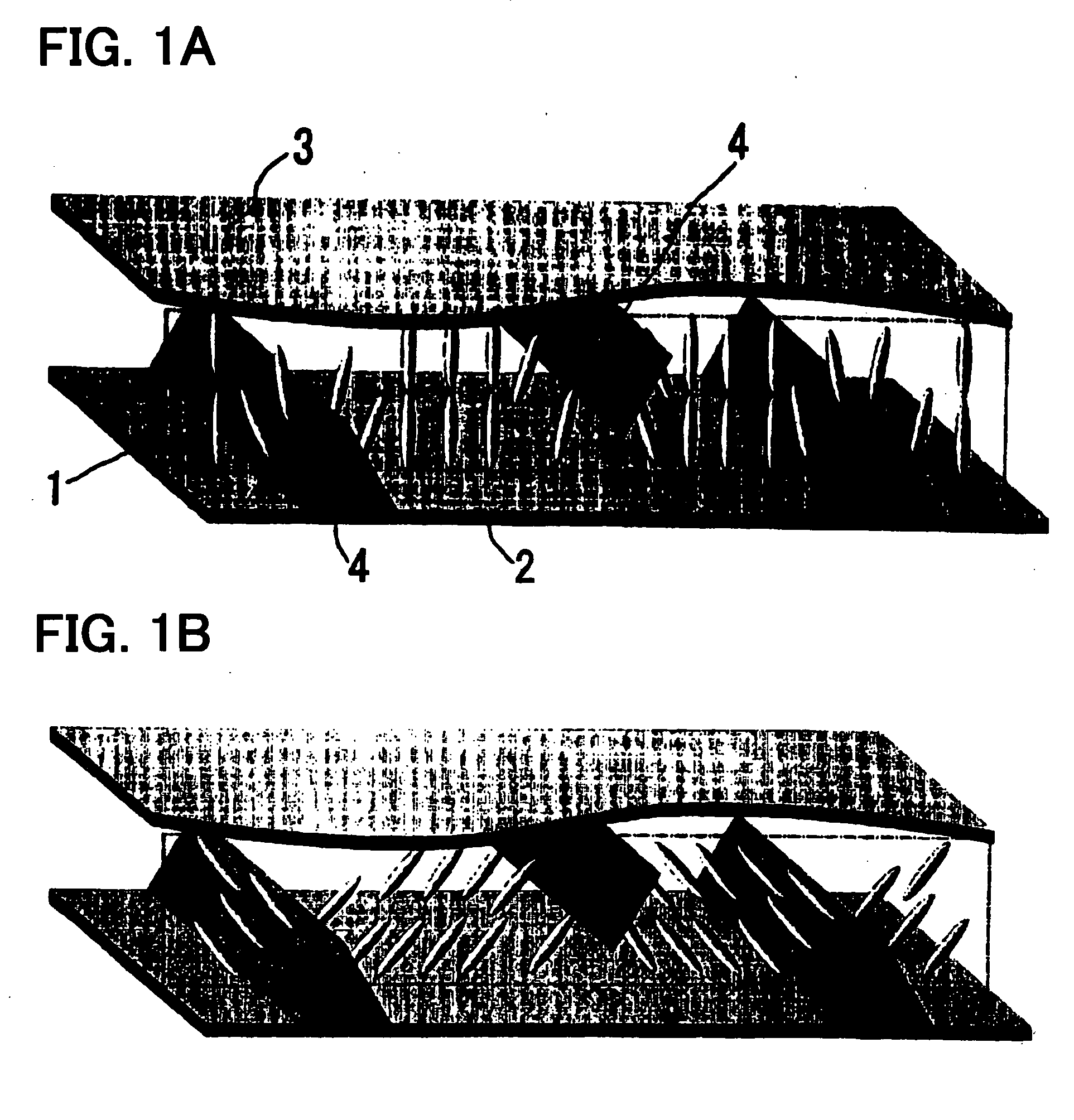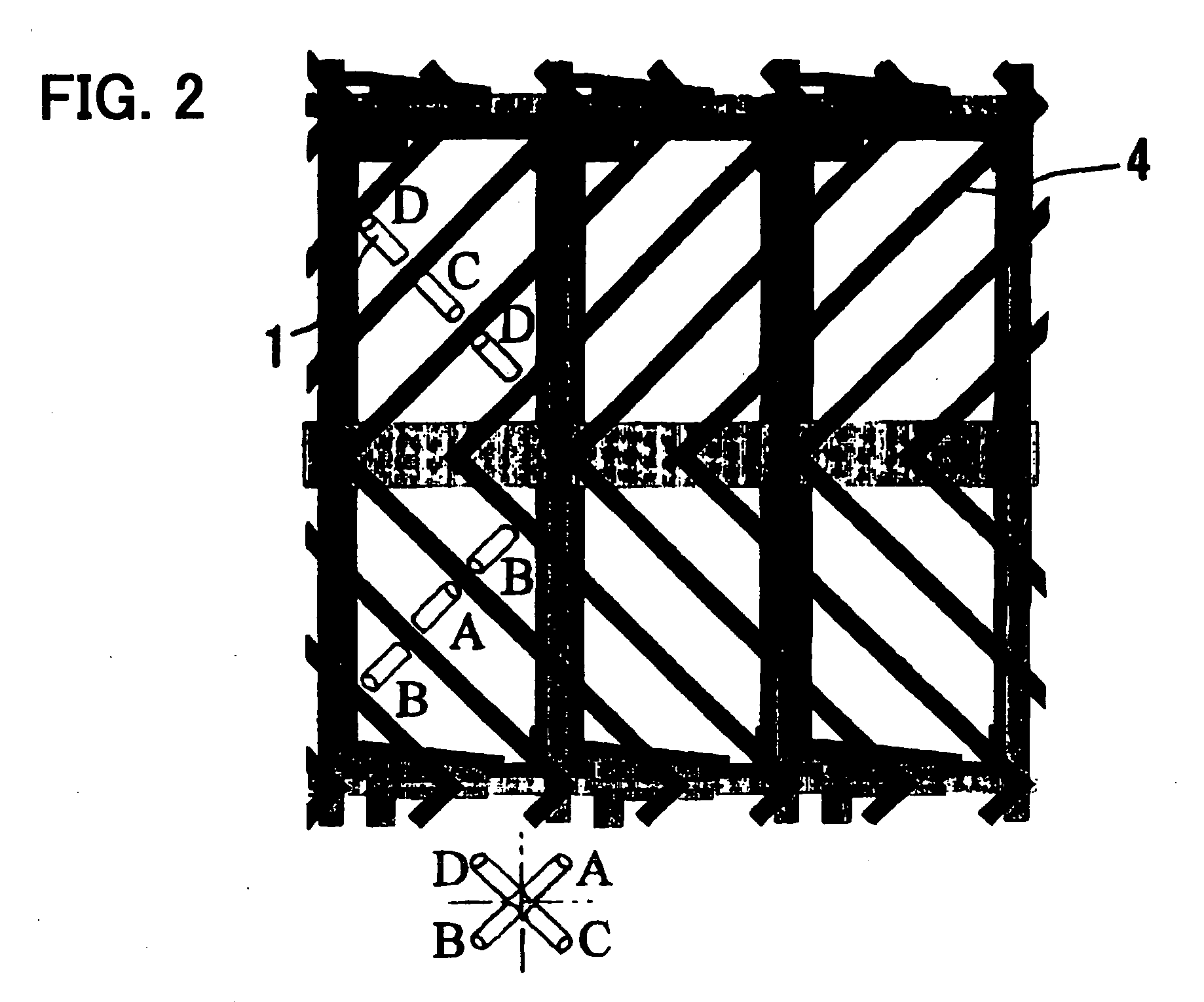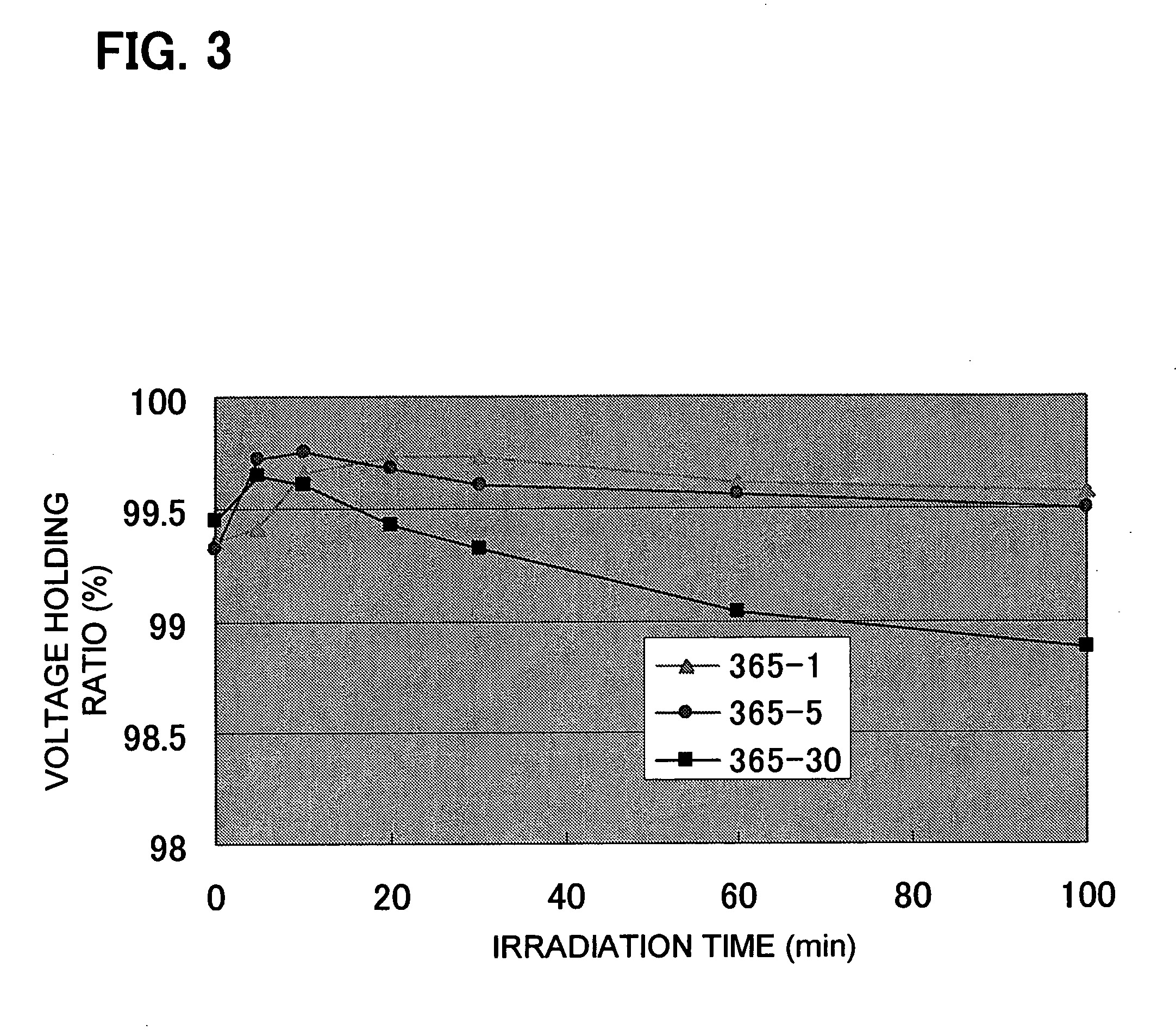Liquid crystal display device
- Summary
- Abstract
- Description
- Claims
- Application Information
AI Technical Summary
Benefits of technology
Problems solved by technology
Method used
Image
Examples
example 1
[0071] As a slit pattern of an electrode according to the present invention, those in FIG. 13 are examples. The letters a to h in FIG. 13 show patterns each for one pixel. The optical characteristics of a liquid crystal panel manufactured, using the electrode structure shown in letter f of FIG. 13 are shown in FIG. 14.
[0072] In FIG. 14, (1) is a case for a liquid crystal panel under conditions of the molar ratio being 10:1, a polymerization initiator being absent, and a resin film according to the present invention being absent; (2) is a case for a liquid crystal panel under conditions of the molar ratio being 15:1, a polymerization initiator being present, and a resin film according to the present invention being absent; (3) is a case for a liquid crystal panel under conditions of the molar ratio being 10:1, a polymerization initiator being present, and a resin film according to the present invention being absent; (4) is a case for a liquid crystal panel under conditions of the mo...
example 2
[0075]FIGS. 11 and 12 show the voltage-transmission characteristics of liquid crystal panels under conditions (3) and (4) described in EXAMPLE 1. In FIGS. 11 an 12, the phrase “UV15, UV40DC” means that the first ultraviolet ray irradiation was performed for the duration of 15 minutes, and the second ultraviolet ray irradiation was performed for the duration of 40 minutes under a voltage application of DC 10 V; the phrase “UV30, UV40DC” means that the first ultraviolet ray irradiation was performed for the duration of 30 minutes, and the second ultraviolet ray irradiation was performed for the duration of 40 minutes under a voltage application of DC 10 V; the phrase “UV60, UV40DC” means that the first ultraviolet ray irradiation was performed for the duration of 60 minutes, and the second ultraviolet ray irradiation was performed for the duration of 40 minutes under a voltage application of DC 10 V; the phrase “UV15, UV40” means that the first ultraviolet ray irradiation was performe...
example 3
[0079] The conditions for (1) of EXAMPLE 1 were adopted, except that a visible light-curable sealant was used as a sealant for the bonding and sealing works for the liquid crystal panel, instead of a conventional UV-curable sealant. Employing this condition will enhance the freedom in the production, since there will be no problem of curing of the liquid crystal composition during the curing of the sealant. A TFT-driven liquid crystal display device having a wide viewing angle and a high response speed was realized.
PUM
 Login to View More
Login to View More Abstract
Description
Claims
Application Information
 Login to View More
Login to View More - R&D
- Intellectual Property
- Life Sciences
- Materials
- Tech Scout
- Unparalleled Data Quality
- Higher Quality Content
- 60% Fewer Hallucinations
Browse by: Latest US Patents, China's latest patents, Technical Efficacy Thesaurus, Application Domain, Technology Topic, Popular Technical Reports.
© 2025 PatSnap. All rights reserved.Legal|Privacy policy|Modern Slavery Act Transparency Statement|Sitemap|About US| Contact US: help@patsnap.com



